How To Change Imperial To Metric In Revit 2017
Revit comes with 2 different units by default: metric and royal units. Just it doesn't mean that you take to use mm or Inch for your project.
I know some people don't want to use millimeter and prefer to employ meter. And sometimes nosotros want to use millimeter in our project, simply we desire to show meter in dimension. A very big building perhaps better shown in meters. There will be too many zeros if we show the dimension in millimeters.
Let's run across how you can change these settings for your projection.
Changing Project Units
If you desire to change the units globally, you need to change it in Projection Units. All annotation settings by default are set to "use project settings".
Unless you inverse this before, and so all annotations will utilise the new project units.
You can change project units from Revit ribbon> Manage tab> Settings panel> Project Units.

Past default, the setting for length in metric template is mm. Surface area is 10002, volume is m3. Endeavor to alter the field of study to see all unit settings available. You can modify units for Structural, HVAC and other disciplines likewise.
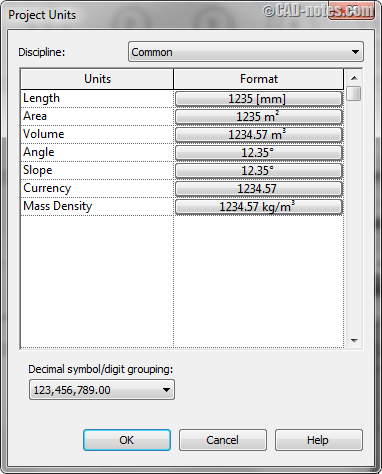
Remember, project units are stored in Revit file. If you want to use it for all your hereafter project, you need to change information technology in your template likewise.
Changing unit in dimension
Revit annotations is set up to use project units past default. You can change dimension units without irresolute project units. This allows y'all to piece of work with millimeters, but show the dimension in meters.
Each notation may store this setting in different location. For dimensions, you tin change it in dimension type. It may be a good idea to create a indistinguishable and leave the default type unchanged.
Select a dimension, and so click Edit Type in Properties Palette.
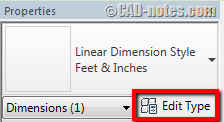
Create a dimension blazon duplicate before you brand whatever changes.
In dimension blazon properties, below Text category, observe Unit of measurement Format. Click the Units Format button.
Uncheck "use projection settings" and then change the unit to your preferred unit. If you show different units in your final drawings, it would be a good idea to show unit of measurement symbol.
For case, for floor plans yous use meters, but in detailed drawings you use millimeters. Showing unit symbol volition avert confusion.
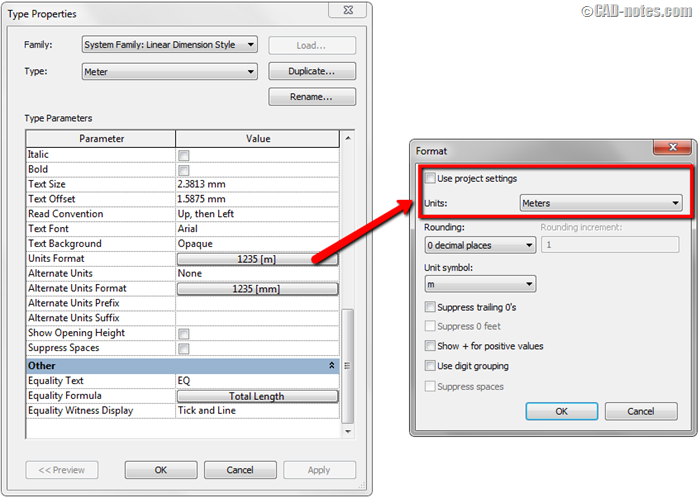
As you can see, now dimensions that utilise this blazon will show measurement in meters. Regardless what you lot fix in the projection units.
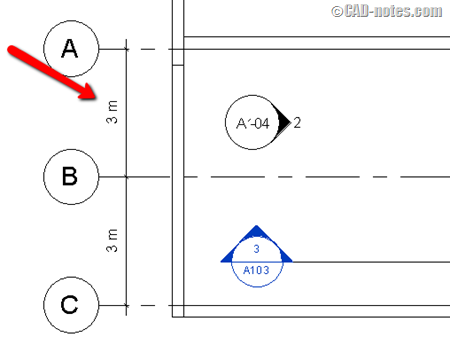
Irresolute unit in Schedules
Schedules are views. It means that y'all tin override the appearance for each view. At that place is no global setting if yous want to apply different unit in schedule. Except by irresolute the projection settings, obviously.
You can change unit in Revit schedule in Formatting tab. Select the fields that you need to change the unit. Click Field Format.
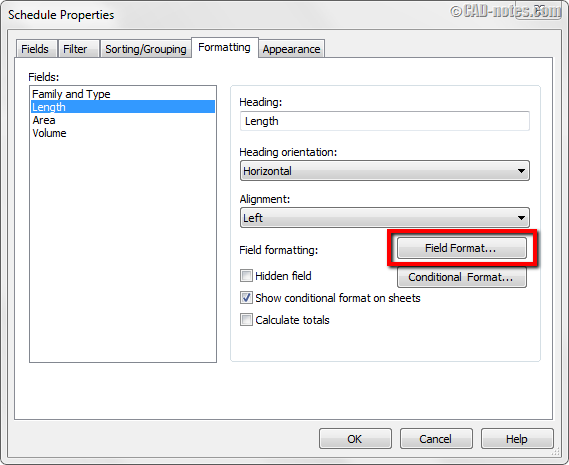
Alternatively, you can alter units in existing schedule using Format Unit button in contextual ribbon. Select the row that y'all want to change the unit, so click Format Unit.
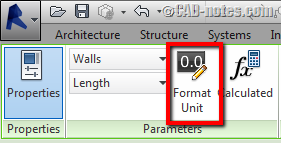
The option for unit format is similar to the 1 in dimension unit format. Uncheck "Apply project settings" and change it as necessary.
Changing unit in Labels
Many annotations are stored in external families. The example that we volition use hither is level symbol.
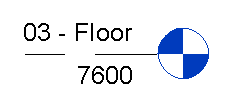
This level symbol use "Level Caput Circle" family. You need to open up that family to modify it. By default that family location is in: C:\ProgramData\Autodesk\RVT 2016\Libraries\United states Metric\Annotations\M_Level Head – Circle.rfa.
If you use other symbol, open that family unit.
In Family unit Editor, select the Elevation characterization.
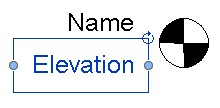
Click edit label button in Revit ribbon. Or you can do that by clicking Edit… button in Properties Palette, next to Label push button.

Click the Elevation label in Label Parameters category.
Then click "Edit Parameter'due south unit format" button every bit shown below.
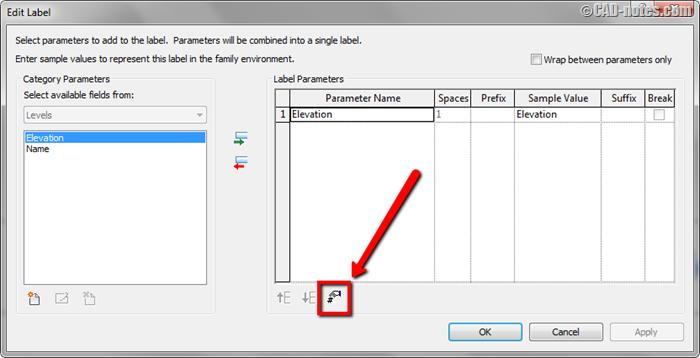
Similar we did for dimension type and schedules, the unit of measurement format dialog is the same. Uncheck "Utilize project settings" and change the units every bit necessary.
Click OK to close all dialog box. And save this family. It is recommended to save it with other proper noun, so you can still utilise the original family unit.
At present you can load the family to your project and override the existing family.
If y'all set this right, you should encounter the symbol is now showing the elevation in meters.
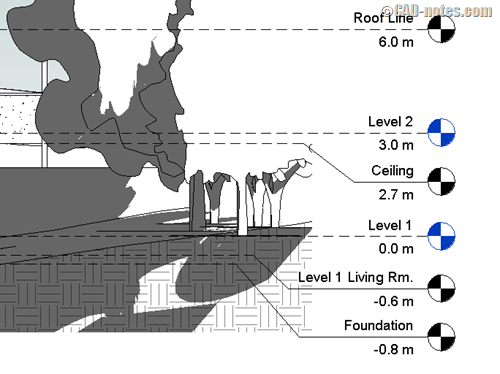
To sum upwardly
Revit works with existent world measurement. Yous can modify the default units at any time during working at your project.
In fact, you can still use millimeter as default unit and blazon the distance in meter.
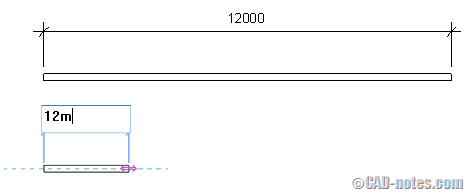
Typing 12000 or 12m in temporary dimension volition give the aforementioned result.
So ready the project units to the unit that you utilise near in your work. Y'all tin easily utilise other unit past typing the unit of measurement in temporary dimension.
For annotations, yous accept the liberty to utilize same unit with the project, or use a specific unit for that particular note. You tin use meter in site programme, mm in detailed drawings or whatsoever other settings.
How about you? What is your preferred unit to use when you piece of work? Practice y'all show annotations with the same units?
Source: https://www.cad-notes.com/revit-units/
Posted by: haleysoccut.blogspot.com


0 Response to "How To Change Imperial To Metric In Revit 2017"
Post a Comment